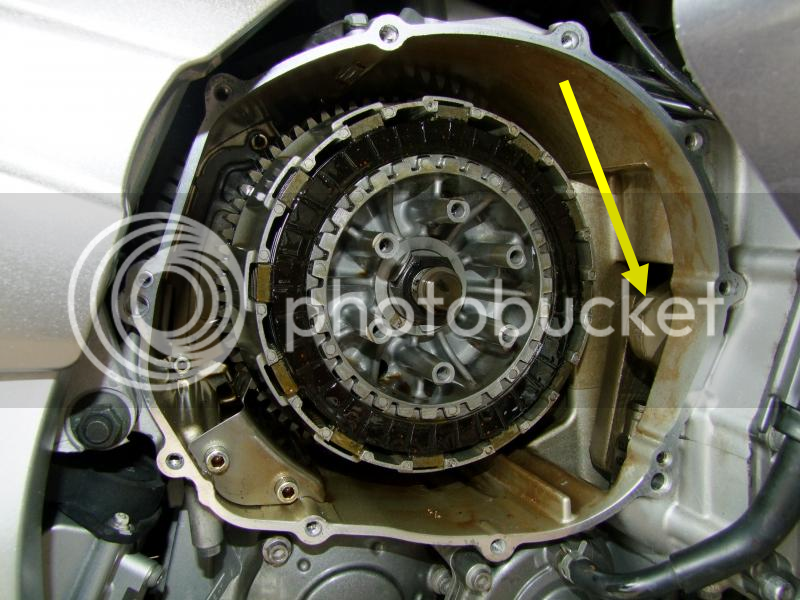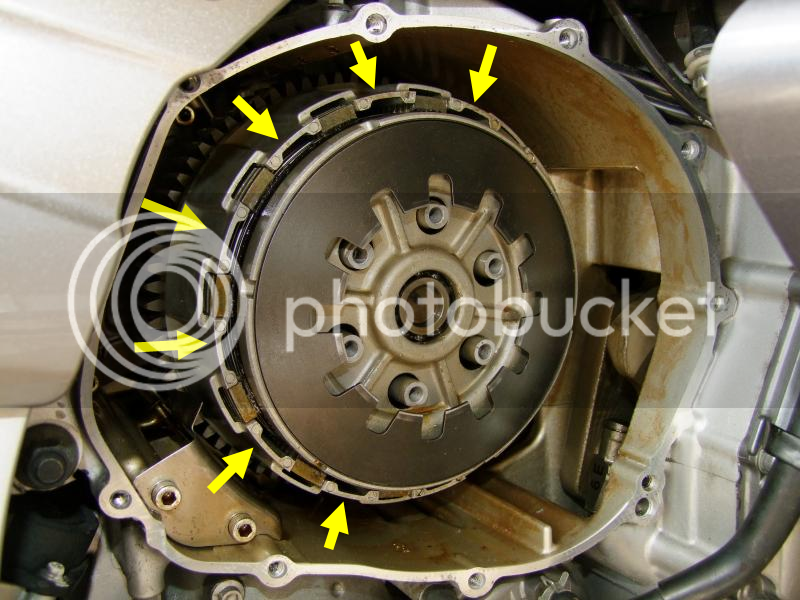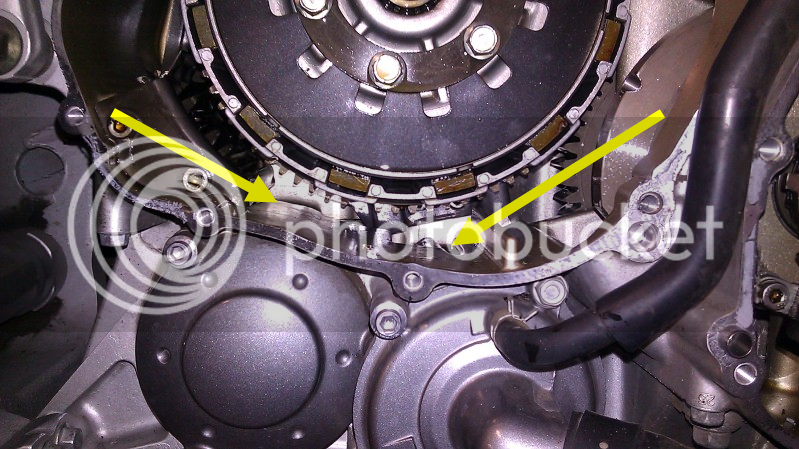This "Having to Do It Again (clutch soak)" seems to be becoming more common.
After thinking about this, I'm thinking the clutch soak is only temporary. Soak it good...problem returns 1500 miles later. Why? The oil on the friction surfaces gets slung/squeezed out of the plates. But, it's not getting replaced by fresh oil....and I think I know why...
Take a look at this great pic of the clutch from mcatrophy's great clutch soak pictorial:
If you take a look at the placement of the clutch in the FJR, it is located WELL above the height of the crankcase. The only source of oil is splash from a crank journal (at the yellow arrow). AND the splash, what there is, hits the outside of the clutch basket, not directly on the drive/driven plates. There is no other source of fresh oil to the assembly other than that splash.
So, if the oil level is marginally low, there will be even LESS splash from the crankshaft onto the clutch assembly. Perhaps a solution, as implied by several posts above, is to run the oil level at the maximum (according to the sight glass).
More oil in the crankcase means more of the crank dipping into the oil, slinging more back on the clutch.
Perhaps as Millsaps2 wrote, putting 5 quarts in, instead of 4 1/2, might be a solution to the sticky clutch problem on many FJR.
I know if I had a sticky-clutch problem, this is what I'd try to remedy the problem.






